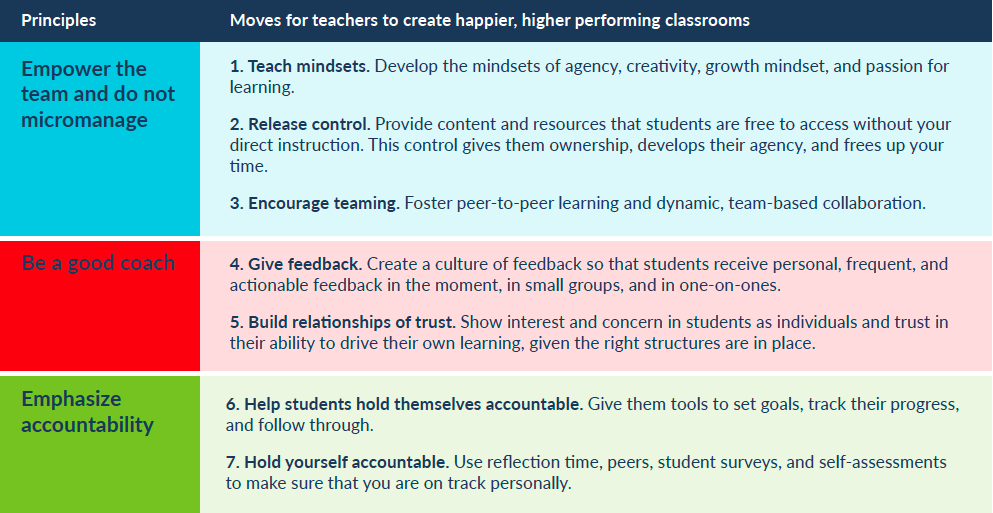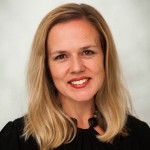EXECUTIVE SUMMARY
This playbook shares the findings of three researchers who set off to discover what K–12 schools can learn from the best-run organizations in America. Why are companies such as Zappos, Geico, and Google continually ranked among the best places to work if you want to be happy and successful? Could classroom teachers use similar strategies to improve their students’ happiness and performance, not to mention their graduates’ readiness to work in America’s top organizations someday?
The researchers—all of whom are former K–12 teachers—began by searching for strategies that successful managers in today’s well-regarded organizations have in common. They found that the best managers in leading organizations do at least three things extraordinarily well: they empower their teams and do not micromanage, they are great coaches, and they emphasize accountability.
Of course, classrooms are inherently different from companies, and students are not teachers’ employees. But in both settings, the person in charge is seeking to create a happy climate that encourages and maximizes positive results. If empowering teams, serving as good coaches, and emphasizing accountability are top principles for successful managers in “best places to work” environments, then similar principles could work for teachers tasked with motivating and guiding students. Furthermore, many students will one day look for jobs in workplaces that embrace these management principles. Classrooms would do well to prepare students by resembling future workplaces more intentionally.
That said, sometimes the hardest part is turning high-level principles into concrete action steps. Through a series of classroom pilots, the researchers found that teachers can replicate the successes of top managers in cutting-edge workplaces by making seven specific, practical moves to introduce a similar culture into their classroom routine.
Many of these moves will look familiar to teachers; as it turns out, good teachers and good managers share many best practices. The difference, however, is in the day-to-day structures and routines that cutting-edge organizations put into place to make these practices sustainable on a consistent basis.
Three sets of teachers—Kelly Kosuga at Alpha Public Schools, Rebecca Weissman and Linda Rogers at Redwood Heights Elementary School, and the advisory team at Khan Lab School—set out during the spring 2016 semester to figure out how to make these moves in a school setting. They each set about making the moves differently. This playbook is loaded with the ideas, pictures, templates, and tools that these teachers discovered during their pilots. Every school is different; choose the ideas that work best in your circumstances. The last chapter identifies lessons learned and common threads across all three sites. You may find these are likely bets for you, too.
By the end of the pilots, all three sites found that one-on-ones between teachers and students were one of the best ways for teachers to use the time they gained from applying new management principles. That discovery has implications for the personalized learning movement. Some opponents say that technology dehumanizes classrooms. The researchers found, however, that the opposite can happen. Teachers can use technology to free up their time so that they can have more human interaction and one-on-one relationships with students than they did before the computers arrived.
Teachers, this playbook is for you. Some of you might be wondering how best to serve an increasingly diverse group of students with complicated needs. Some might be facing more devices and other technology in your classrooms and wondering what your role is in a world where instruction can be delivered from so many different sources. Some might be concerned with students’ low performance in school and failure to launch after school. If you have any of these concerns, then this playbook is intended to ease your load. Your journey to improve your classroom and meet the needs of today’s students is not in the dark; successful managers outside of education, combined with the teachers in the pilot schools in this playbook, together illuminate a number of moves that can help you better meet the needs of students today.




